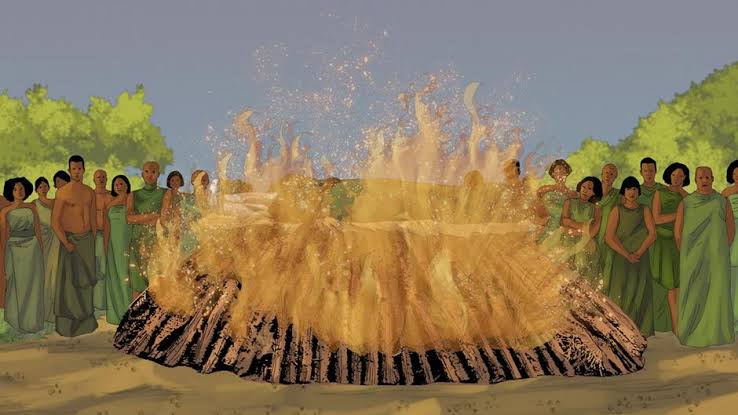THE BEAUTY AND CHALLENGES OF INTERRACIAL MARRIAGE

Interracial marriage is a union between individuals from different racial or ethnic backgrounds, a beautiful manifestation of love that transcends societal boundaries. People would probably have different opinions regarding the subjects. For example, people living in interracial relationships can support the marriage, people who were in it would also have something to say about it, […]
THE BEAUTY AND CHALLENGES OF INTERRACIAL MARRIAGE

Interracial marriage is a union between individuals from different racial or ethnic backgrounds, a beautiful manifestation of love that transcends societal boundaries. People would probably have different opinions regarding the subjects and this article will give you some insights into those opinions. For example, people living in interracial relationships would support the marriage, people who […]
THE BRIDE PRICE AND THE MARRIAGE BUSINESS

For many centuries the DRC has been organising marriage in fixing a type of dowry as in most of the African countries. The country has different method for the dowry and the bride price is part of it, some traditional furniture can be given as well to the bride’s family. As in so many cultures […]
MOVING TO CONGO DRC: VISA AND CITIZENSHIP REQUIREMENTS AND CHALLENGES

It is very important to travel, to venture out and discover the world in its cultural, historical diversity. The DRC is a very warm country, rich in mineral and natural resources, its wonderful biodiversity is even more attractive. In this article of Congotalks243, we will find out: How to travel to DRC and how to […]
THE GREAT LUNDA EMPIRE (Congolese pre-colonial Kingdoms)!

As usual, we always talk about the great events that have marked African culture and history, particularly the Democratic Republic of Congo. We are going to find out about the Lunda Empire, one of the greatest pre-colonial Congolese, Angolan and Zambian kingdoms in this part of Congotalks243. ORIGIN OF THE LUNDA EMPIRE The Lunda empire […]
THE STORY OF A KONGO REVOLUTIONARY

KIMPA VITA KONGO DIA NTOTILA 1684-1706! During the pre-colonial period, Africa knew a woman named Kimpa Vita, a young revolutionary from the Kingdom of Kongo (near modern day Angola) who had unified the kingdom by establishing the revolutionary Antonianist movement. Antonianism was composed of Christian beliefs and black, traditional Kongo beliefs. She was a very […]
THE KUBA KINGDOM! The kingdom of the Bakuba

Congolese pre-colonial Kingdoms The Kuba Kingdom is a state entity founded in the 1600s and is currently located in the Democratic Republic of Congo. It is a pre-colonial Congolese kingdom and the historical branch of Congotalks243 has the pleasure to tell you about it and make you discover the beauty of the Democratic Republic of […]
THE STORY OF THE KINGDOM OF KONGO! KONGO DIA NTOTILA!

Congolese pre-colonial Kingdoms The Democratic Republic of Congo is a vast territory that has seen many interesting events, including those of pre-colonial kingdoms. In this part of Congotalks243, we will debrief the history of the kingdom of Kongo or Kongo Dia Ntotila, one of the largest kingdoms in Central Africa. THE KINGDOM’S ORIGIN The Kingdom of […]
A LOOK AT THE GREAT LUBA EMPIRE (Congolese pre-colonial Kingdoms)

The DRC is a country with a rich history. We find of course several kingdoms and empires that have shaped the Congolese culture of today. In this part of Congotalks243 dedicated to Congolese history, we will discover one of the greatest empires of Central Africa, the Luba Empire. The Luba empire origins The Baluba people would have […]
WHICH CONGOLESE LANGUAGE SHOULD YOU LEARN BEFORE VISITING CONGO DRC

As with travelling to any country in the world, it is important to know one of the national or local languages of the destination country. The DRC is a vast country with more than 80,000,000 inhabitants, and about 250 ethnic groups, divided into several groups of which the Bantu represent 80% with the Luba, Mongo, […]
